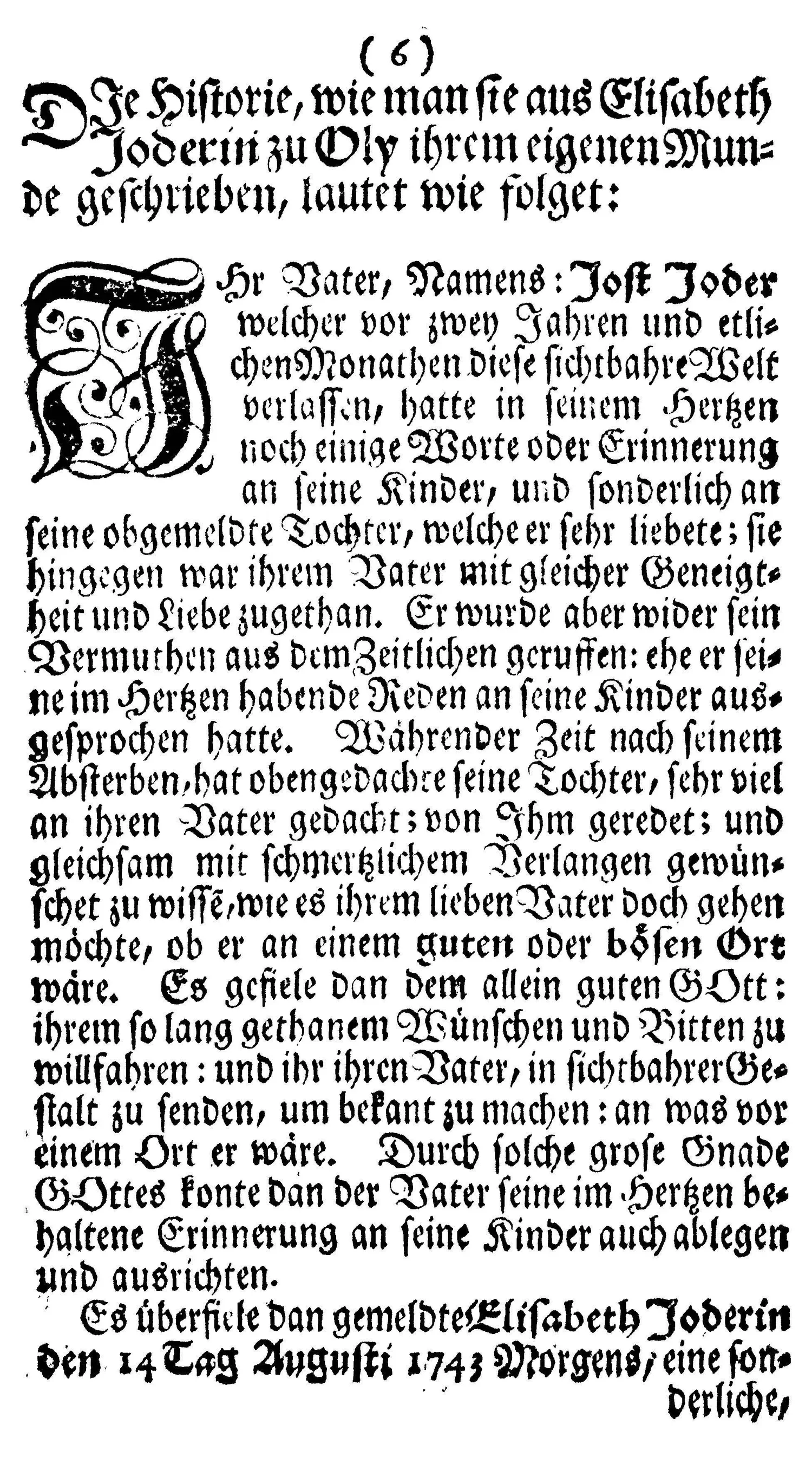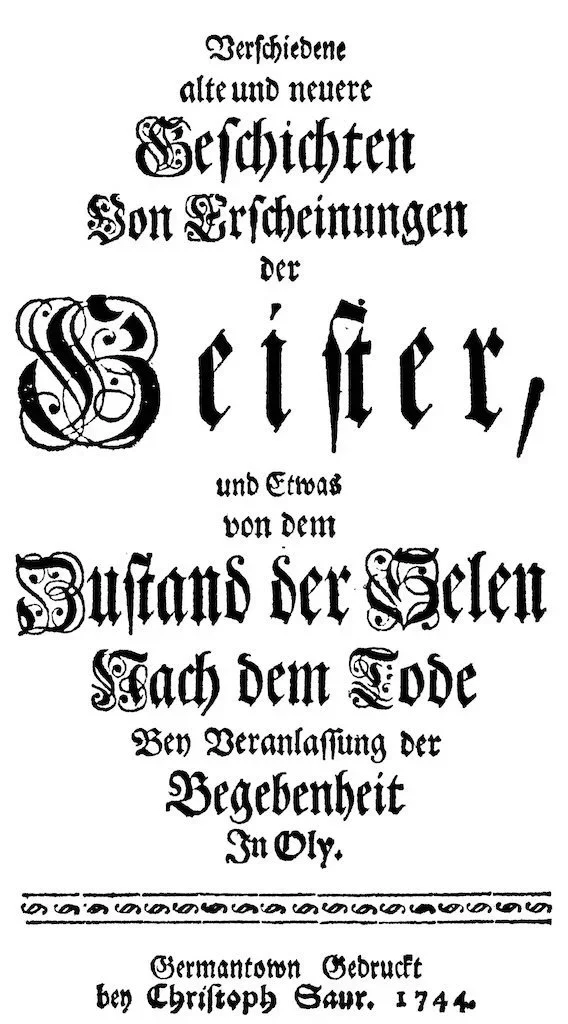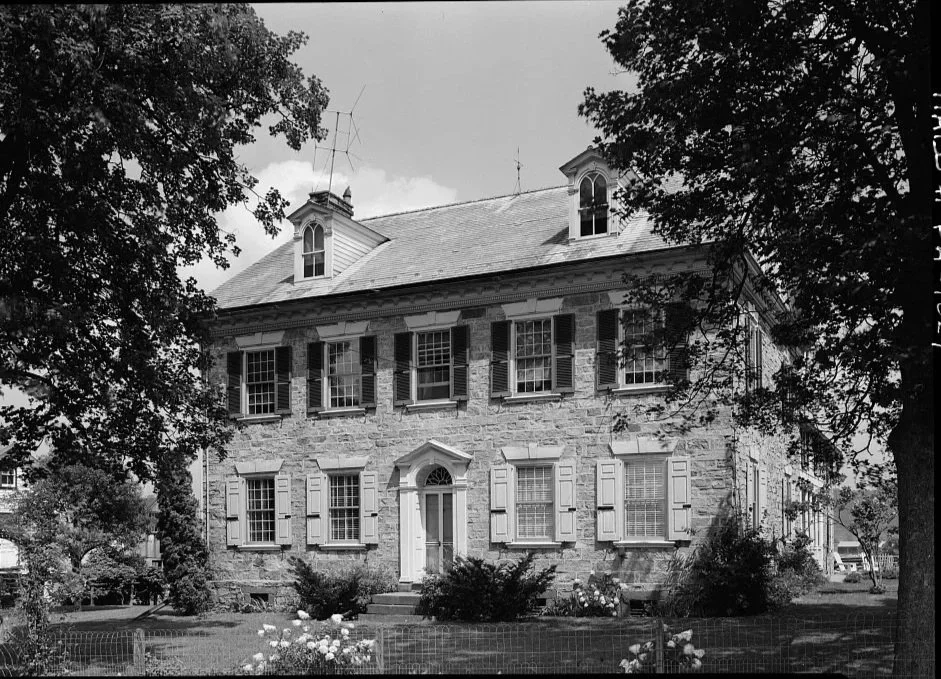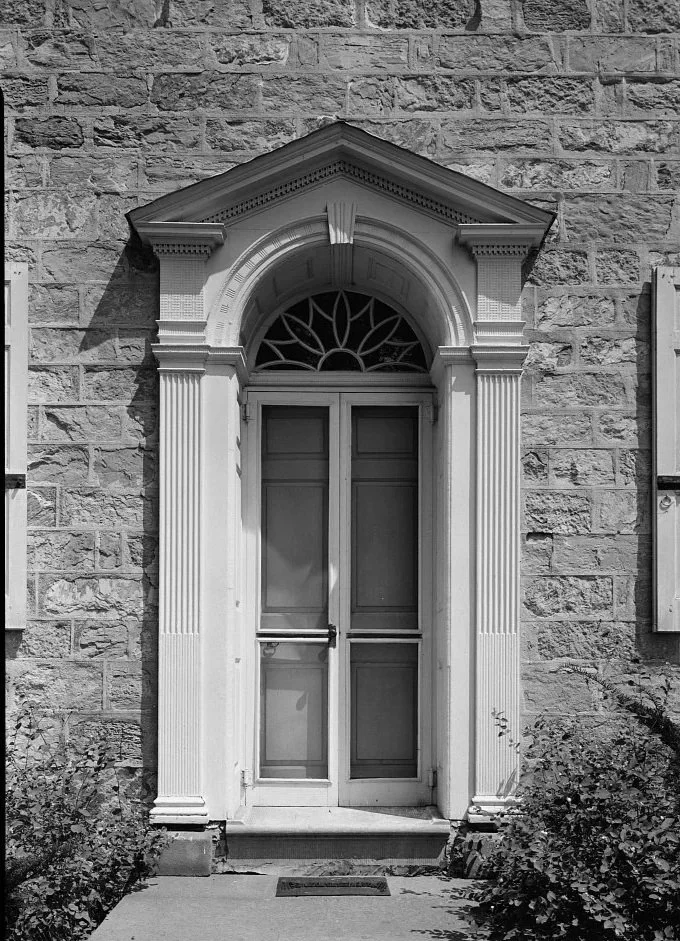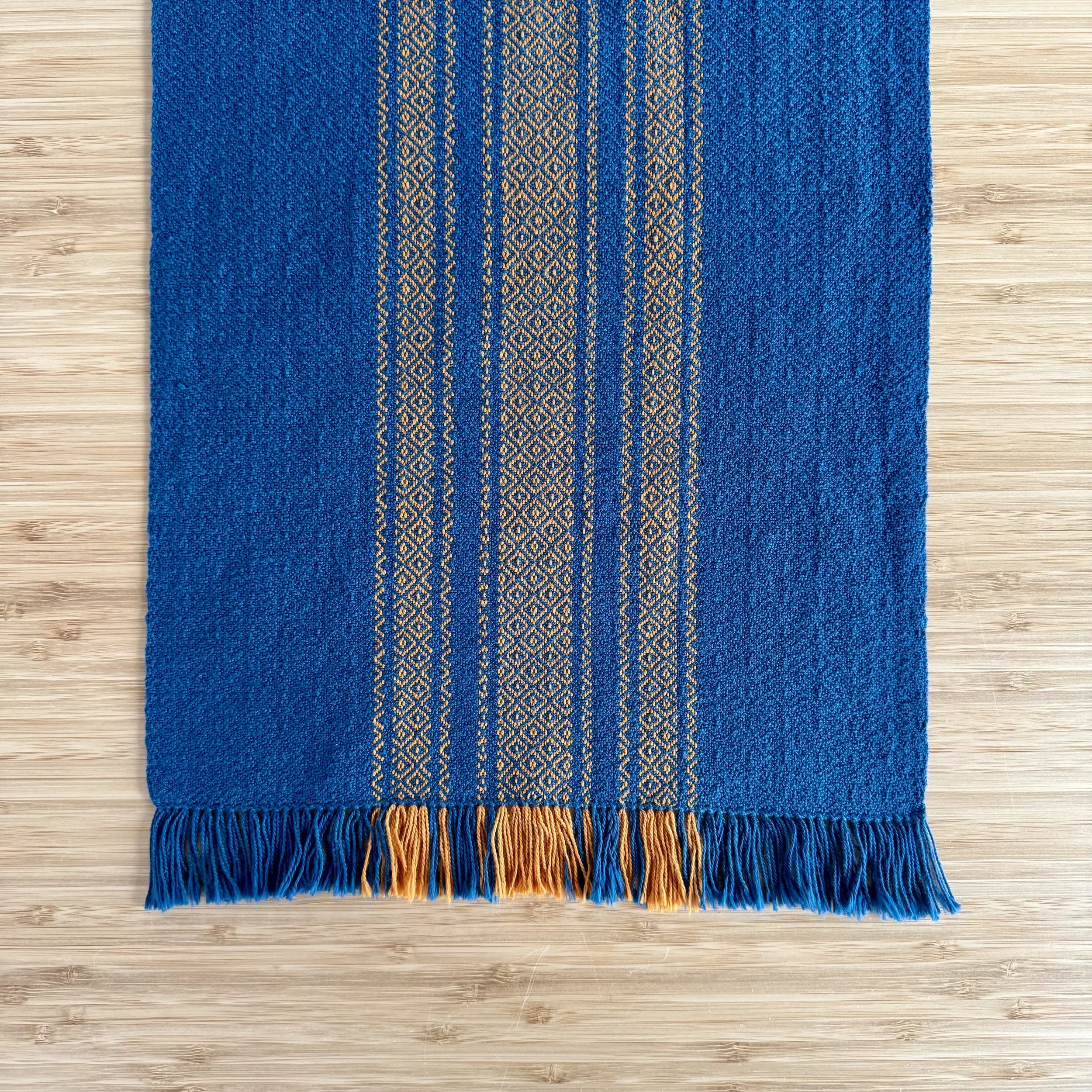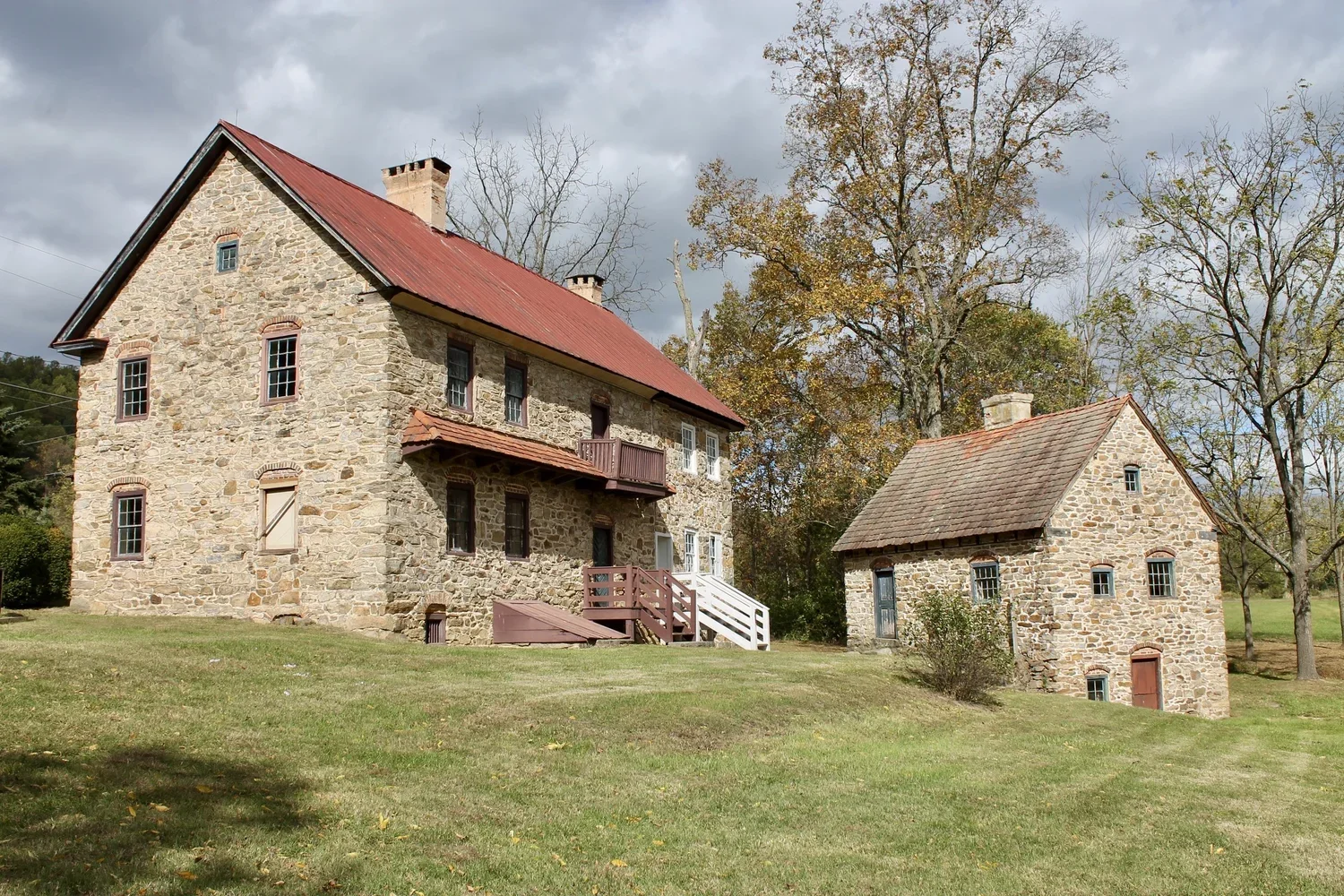Yost’s ghost
Yost Yoder died in 1742 and was sorely missed from the old homestead along the Manatawny Creek.
Salome, 24 October 2025
[as we approach Halloween, I’m reposting some spooky tales from an earlier version of this blog]
Yost Yoder died in 1742 and was sorely missed from the old homestead along the Manatawny Creek. His daughter Elisabeth, especially, wondered about him — Where was he? How was he?
On an August morning the year following her father’s death, Elisabeth sensed his presence in the home. So overcome was she, that she couldn’t eat or sleep. The next day, while outside at work, something pulled her back into the house. And there, sitting on the bed, was her father — dressed and looking just as he did in his coffin a year earlier. Elisabeth ran back outside, fell to the ground, and began shaking violently.
Her mother was worried and arranged for her daughter to go to a neighboring farm for a few days’ rest. But Elisabeth found no rest there; something deep inside pulled her back home. The next morning, she returned and went straight to the bedroom. The room turned pitch black and silent, an eerie feeling surrounded her. She wasn’t alone. Just then a bright light appeared in the darkness — the glowing ghost of her father, Yost Yoder!
They spoke with each other, and she learned that he had returned from the grave to tell her two important things. One: to heed her mother. And two: to heed the “Frenchman” — for he preaches the truth. Elisabeth tried asking more questions, but all that came was a warning. She would suffer a terrible illness in the coming days and come close to death — whereupon she would recover. With that, her father's ghost disappeared.
That evening, Elisabeth fell ill, declining slowly over the next two days, until finally on the third night those who watched over her were certain that death had come calling again at the Yoder home. But by morning, exhausted, Elisabeth awoke, gaining in strength, and ready to tell everyone her story.
And so, it was written up from Elisabeth’s own retelling and published by Christopher Sauer in 1744 in a book of ghost stories. The “Frenchman” was George de Benneville, a Huguenot and Christian Universalist preacher who lived in the Oley Valley.
Title page of the 1744 publication
First published telling of the ghost story
Henry Fisher’s book
The Pennsylvania Dutch loved to add decorations all over.
Mieleta, 19 September 2025
The Pennsylvania Dutch loved to add decorations all over. An old Bible in the Tuliptree Collection has a curious decoration on the tail edge of the textblock.
Decoration on the textblock
It’s a simple punch-type decoration with a sweet heart. We’re familiar with the common bookplate decorations of the Pennsylvania Dutch, but page edge decoration is more of an English practice. The Swem Library at William & Mary has a large collection of such fore-edge painted books. This book is certainly not English — it’s a 1782 Luther translation of the Bible printed at Halle, Germany.
Title page, Luther Bible, printed in Halle 1782
An inscription inside tells us who owned it.
Henry Fisher’s book 1784
Henry Fisher was born in 1758 in Lower Heidelberg (Berks County), the son of Johann Peter and Maria Appolonia (Heckert) Fisher, and moved to the Oley Valley, eventually buying a property there. Between 1798 and 1801, Henry and his wife Susanna Ruth had their beautiful limestone home built. It is an example of the growing popularity of Georgian house architecture among the Pennsylvania Dutch.
Fisher House, Historical American Buildings Survey, Library of Congress
Although it has classic Georgian characteristics, it was still built in the Oley Valley and so the carvings around the door, for example, are hallmarks of Pennsylvania Dutch craftsmanship.
Front door carving on the Fisher House, Historical American Buildings Survey, Library of Congress
Susanna Fisher died in 1821 and was the first burial in the new section of the Oley Union Cemetery in Spangsville. Henry, however, doesn’t rest next to his wife — in fact, he isn’t buried in Oley at all. In 1823, he visited his daughter Mary who had since moved 175 miles west. Henry died on that trip to Huntington County and so there he remains. Certainly, there was more than one Henry Fisher, but we can be more certain that Henry Fisher of Oley was the owner of Bible, because of a letter tucked inside. The letter was written to Mary’s grandson Norman by the daughter of Mary’s brother David who then occupied the Fisher home in the Oley Valley.
The Fisher home is still in the family and is located along 662 in Oley. They run a produce business, so stop by for some fruits and vegetables when you’re in the area.
Aunt Betsy
Just off my loom are table runners that I wove in a goose eye twill variant. The pattern is based on a diamond patterned tablecloth owned by the Keim family who lived in Berks County’s Oley Valley.
Pius, 11 July 2025
Just off my loom are table runners that I wove in a goose eye twill variant. The pattern is based on a diamond patterned tablecloth owned by the Keim family who lived in Berks County’s Oley Valley. The family traces back to Johannes Keim, who came to Pennsylvania, found good soil to till in the valley, returned to Europe to start a family, and then returned with them in 1707.
Two centuries later, the household had dwindled down to five unmarried sisters. The last one to die was Elizabeth in 1911. She had never traveled by car or train in her entire life, preferring to stay close to home. Her estate included a nearly 100 handwoven table linens — including the one I’ve replicated here and am calling “Aunt Betsy” in her memory.
“Aunt Betsy” tablerunner
By most accounts, the family was a mystery. During an audit of Betsy’s estate following her death, a probate lawyer — exasperated by the complexities of entire ordeal — said “this estate is as peculiar as the Keims themselves were.” Indeed, they were fairly isolated and kept modern conveniences at a suspicious distance. The Keims preferred to stick to the old ways and traditions on their 300-acre farm.
Elizabeth “Betsy” Keim (1829–1911), American Folklife Institute
A lasting vestige of the Keims on the Oley Valley landscape is the home that Johannes Keim’s son Jacob built in 1753. It still stands along Keim Road in Pike Township and is a designated National Historic Landmark, being a significant example of German colonial architecture. And, if you believe it, Betsy’s ghost still lingers there.
Keim homestead, Oley Valley, Berks County

